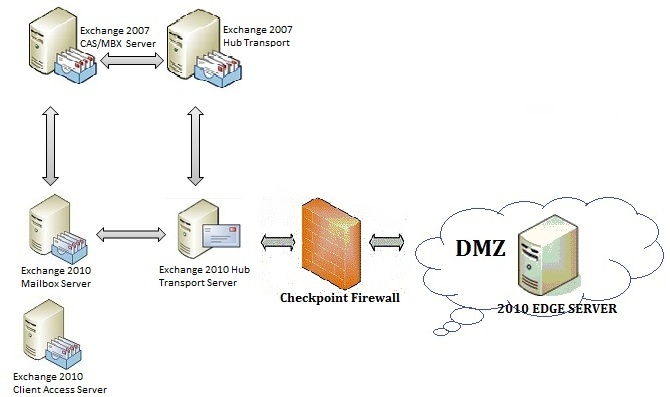There are many articles available on running BETest, I thought of writing my own article with experience I had running BETest.
The version of BETest that is used here is located in the VSS SDK, which can be
Downloaded from the following location
http://www.microsoft.com/downloads/details.aspx?FamilyID=0B4F56E4-0CCC-4626-826A-ED2C4C95C871&displaylang=en
The current version of the VSS SDK is 7.2
After installing the VSS SDK, you will then find BETest in the following directory.
%Program Files%\Microsoft\VSSSDK72\TestApps\betest\obj\x64 (or i386). There are separate versions of Betest for x64, and i386.
Make sure to run the version that corresponds to the OS build that you have (x64 or x86).
The next step to using Betest is to build your input file. Most documentation refers to it as components.txt, but it can be called whatever you want. The contents are what is important. The information required in the components.txt file is as follows:
"<writer-id>": "<component-logical-path>";
The first step in building your components.txt file is to determine the writer ID. Fortunately, the Exchange Writer ID does not change.
That ID will be as follows.
"{76fe1ac4-15f7-4bcd-987e-8e1acb462fb7}":
This information can be confirmed by running the following command from a command prompt.
vssadmin list writers
Writer name: 'Microsoft Exchange Writer'
Writer Id: {76fe1ac4-15f7-4bcd-987e-8e1acb462fb7}
Writer Instance Id: {9ba5818d-b602-4486-b014-9c667a9a8916}
State: [1] Stable
Last error: No error
You now have the Exchange Writer ID, which makes up the first half of the input file. The second part of the file is the logical path. This is the path to the GUID of the Storage Group that you want to back up. This requires you to find out what the GUID of the storage groups are. Fortunately, with Exchange 2007, this is easily done using PowerShell. Simply run the below command.
Get-StorageGroup -server <servername> | fl name, guid
Name: First Storage Group
Guid: aaecdeb8-7891-4fca-ade8-a1a3c0bf97f8
Name: Second Storage Group
Guid: 32fca98d-e58c-42dd-b2d2-a0982a3ff480
Name: Third Storage Group
Guid: e28a4919-79fa-4741-b76d-b780d5578460
Standalone
"{76fe1ac4-15f7-4bcd-987e-8e1acb462fb7}": "Microsoft Exchange Server\Microsoft Information Store\<SERVERNAME>\aaecdeb8-7891-4fca-ade8-a1a3c0bf97f8";
CCR system input file
"{76fe1ac4-15f7-4bcd-987e-8e1acb462fb7}": "Microsoft Exchange Server\Microsoft Information Store\<SERVERNAME>\<GUID of SG>"
You are now ready to run the BEtest command. Note that the switches included with the command are case sensitive
BETEST.exe /B /E /T 1 /S output.xml /C components.txt /D c:\backup
The backup should now start, and you will see output on the screen similar to the following.
Asked to do backup only
Asked to exclude BETEST test writer
Backup-type to use is 1
File name to save/load Backup Document is "output.xml"
File name for Components Selection is "sg1active.txt"
Directory to save/restore backup files is "c:\backup\"
Conclusion:
BETest is a utility to test Exchange Writer. If BETest is successful, and leaves the Exchange Writer in a STABLE state (observed from the output), then the you needs to be referred to your backup vendor for further troubleshooting of their application. Prior to testing with BETest, ensure that you have the most recent Windows VSS hotfixes/updates applied.
Note: This article applies to Exchange Server 2007 running on Windows Server 2003 only. Refer to my previous blog for running BETest on Windows Server 2008.
Cheers,
The version of BETest that is used here is located in the VSS SDK, which can be
Downloaded from the following location
http://www.microsoft.com/downloads/details.aspx?FamilyID=0B4F56E4-0CCC-4626-826A-ED2C4C95C871&displaylang=en
The current version of the VSS SDK is 7.2
After installing the VSS SDK, you will then find BETest in the following directory.
%Program Files%\Microsoft\VSSSDK72\TestApps\betest\obj\x64 (or i386). There are separate versions of Betest for x64, and i386.
Make sure to run the version that corresponds to the OS build that you have (x64 or x86).
The next step to using Betest is to build your input file. Most documentation refers to it as components.txt, but it can be called whatever you want. The contents are what is important. The information required in the components.txt file is as follows:
"<writer-id>": "<component-logical-path>";
The first step in building your components.txt file is to determine the writer ID. Fortunately, the Exchange Writer ID does not change.
That ID will be as follows.
"{76fe1ac4-15f7-4bcd-987e-8e1acb462fb7}":
This information can be confirmed by running the following command from a command prompt.
vssadmin list writers
Writer name: 'Microsoft Exchange Writer'
Writer Id: {76fe1ac4-15f7-4bcd-987e-8e1acb462fb7}
Writer Instance Id: {9ba5818d-b602-4486-b014-9c667a9a8916}
State: [1] Stable
Last error: No error
You now have the Exchange Writer ID, which makes up the first half of the input file. The second part of the file is the logical path. This is the path to the GUID of the Storage Group that you want to back up. This requires you to find out what the GUID of the storage groups are. Fortunately, with Exchange 2007, this is easily done using PowerShell. Simply run the below command.
Get-StorageGroup -server <servername> | fl name, guid
Name: First Storage Group
Guid: aaecdeb8-7891-4fca-ade8-a1a3c0bf97f8
Name: Second Storage Group
Guid: 32fca98d-e58c-42dd-b2d2-a0982a3ff480
Name: Third Storage Group
Guid: e28a4919-79fa-4741-b76d-b780d5578460
Standalone
"{76fe1ac4-15f7-4bcd-987e-8e1acb462fb7}": "Microsoft Exchange Server\Microsoft Information Store\<SERVERNAME>\aaecdeb8-7891-4fca-ade8-a1a3c0bf97f8";
CCR system input file
"{76fe1ac4-15f7-4bcd-987e-8e1acb462fb7}": "Microsoft Exchange Server\Microsoft Information Store\<SERVERNAME>\<GUID of SG>"
You are now ready to run the BEtest command. Note that the switches included with the command are case sensitive
BETEST.exe /B /E /T 1 /S output.xml /C components.txt /D c:\backup
The backup should now start, and you will see output on the screen similar to the following.
Asked to do backup only
Asked to exclude BETEST test writer
Backup-type to use is 1
File name to save/load Backup Document is "output.xml"
File name for Components Selection is "sg1active.txt"
Directory to save/restore backup files is "c:\backup\"
Conclusion:
BETest is a utility to test Exchange Writer. If BETest is successful, and leaves the Exchange Writer in a STABLE state (observed from the output), then the you needs to be referred to your backup vendor for further troubleshooting of their application. Prior to testing with BETest, ensure that you have the most recent Windows VSS hotfixes/updates applied.
Note: This article applies to Exchange Server 2007 running on Windows Server 2003 only. Refer to my previous blog for running BETest on Windows Server 2008.
Cheers,






